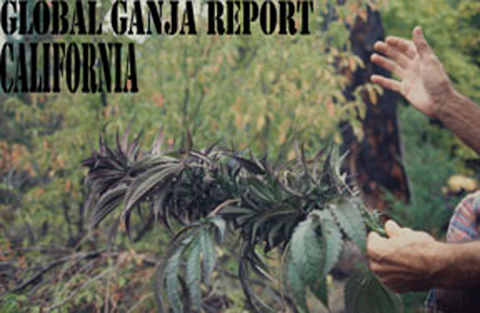 Pollution from outlaw cannabis grows deep in California's national forests is far worse than previously thought, and has turned thousands of acres into virtual toxic waste dumps. That's the sobering assessment of an Aug. 6 Reuters report on the mounting ecological impacts of outdoor cultivation in the Golden State, which accounts for upwards of 90% of illegal marijuana production nationwide.
Pollution from outlaw cannabis grows deep in California's national forests is far worse than previously thought, and has turned thousands of acres into virtual toxic waste dumps. That's the sobering assessment of an Aug. 6 Reuters report on the mounting ecological impacts of outdoor cultivation in the Golden State, which accounts for upwards of 90% of illegal marijuana production nationwide.
These impacts have increased along with the expansion of the cannabis economy. Ecologist Mourad Gabriel, who studies the question for the US Forest Service, told Reuters he estimates that California's forests hold 41 times more solid fertilizers and 80 times more liquid pesticides than investigators found in 2013.
Growers are increasingly using fertilizers and pesticides that are restricted or banned in the United States, including carbofuran and zinc phosphide, the account finds. Gabriel, who has visited more than 100 sites across the state, calculates that federal land in California contains 731,000 pounds of solid fertilizer, 491,000 ounces of concentrated liquid fertilizer and 200,000 ounces of toxic pesticides—overwhelmingly from cannabis grows.
"They are like superfund sites," said Assistant US Attorney Karen Escobar, whose Fresno office has filed numerous environmental damage cases related to pot cultivation. Superfund sites are those targeted by the US Environmental Protection Agency (EPA) for high-priority clean-up due to their threats to public health.
"These places aren't safe to go into," said state Assemblyman Jim Wood, who has pushed for clean-up funding. The Forest Service has a backlog of 639 former grow sites awaiting restoration in California, each covering up to 50 acres.
Reuters does note that as California moves to license growers under the new legalization policy, officials plan to regulate the use of chemicals. But rules can only be enforced on those who cultivate legally. "We've got 4,000 illegal grows in our county," said Keith Groves, a supervisor in Northern California's Trinity County. "I'll be happy if we can get 500 of them to become licensed."
What the account doesn't emphasize is that while the federal government is willing to prosecute over environmental damage related to cannabis cultivation, it has completely abdicted its responsibilities where regulation is concerned.
The EPA won't step up to the plate and regulate pesticide and fertilizer use even for the legal cannabis industry, on the argument that the herb remains illegal at the federal level. This is an obvious obstacle to the development of uniform standards as the industry is daylighted.
This dilemma was noted by a Bloomberg report on Aug. 2. Most recently, an attempt by Scotts Miracle-Gro (parent company of General Hydroponics) and the California Department of Pesticide Regulation to register pesticides for use on cannabis was turned down in June by EPA administrator Scott Pruitt.
Bloomberg does make note of the California industry's current effort to develop its own standards. Cited is Natalie Darves, who teaches at Oaksterdam University in Oakland, and is promoting non-toxic treatment for the pests that attack the cannabis plant. Darves especially mentioned Regalia, a "biopesticide" produced by Marrone Bio Innovations.
But according to Bloomberg, after some online buzz about Regalia's efficacy in dealing with mildew in cannabis grows, the company's CEO Pam Marrone issued a statement saying they had no plans to market to marijuana growers.
The cannabis industry is facing up to its ecological impacts, and looking to the daylight of legalization as providing a healtier atmosphere for responsible practices, if not a panacea. But meanwhile it has got to be acknowledged that federal intransigence is part of the problem.
Cross-post to High Times
Graphic by Global Ganja Report







Recent comments
1 week 6 days ago
5 weeks 5 days ago
9 weeks 5 days ago
10 weeks 3 days ago
20 weeks 3 days ago
24 weeks 4 days ago
25 weeks 4 days ago
25 weeks 4 days ago
46 weeks 5 days ago
50 weeks 6 days ago